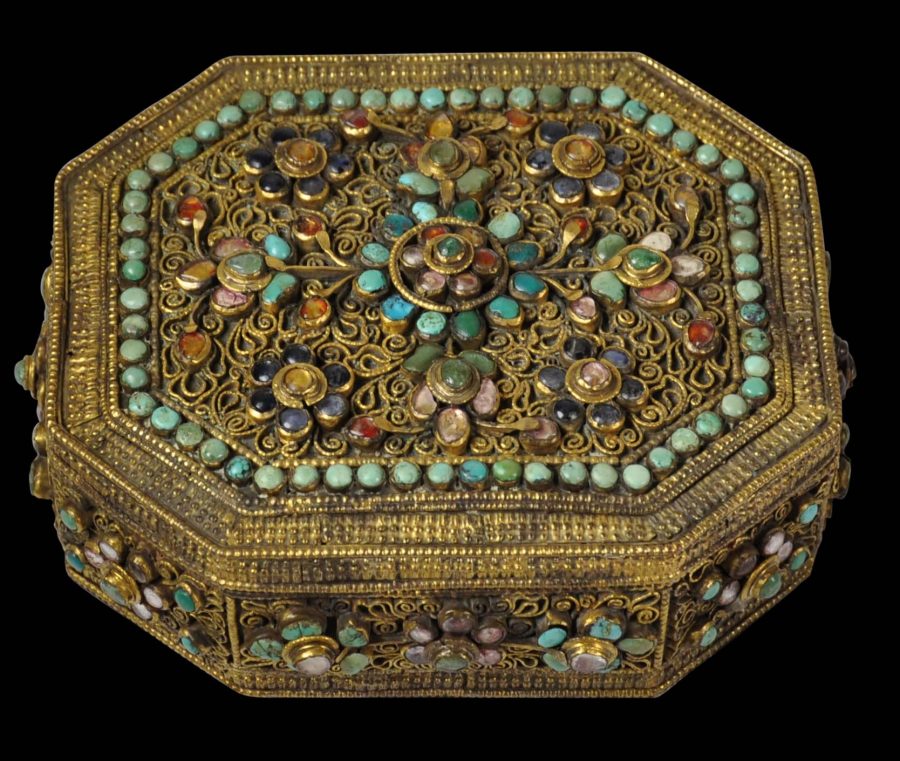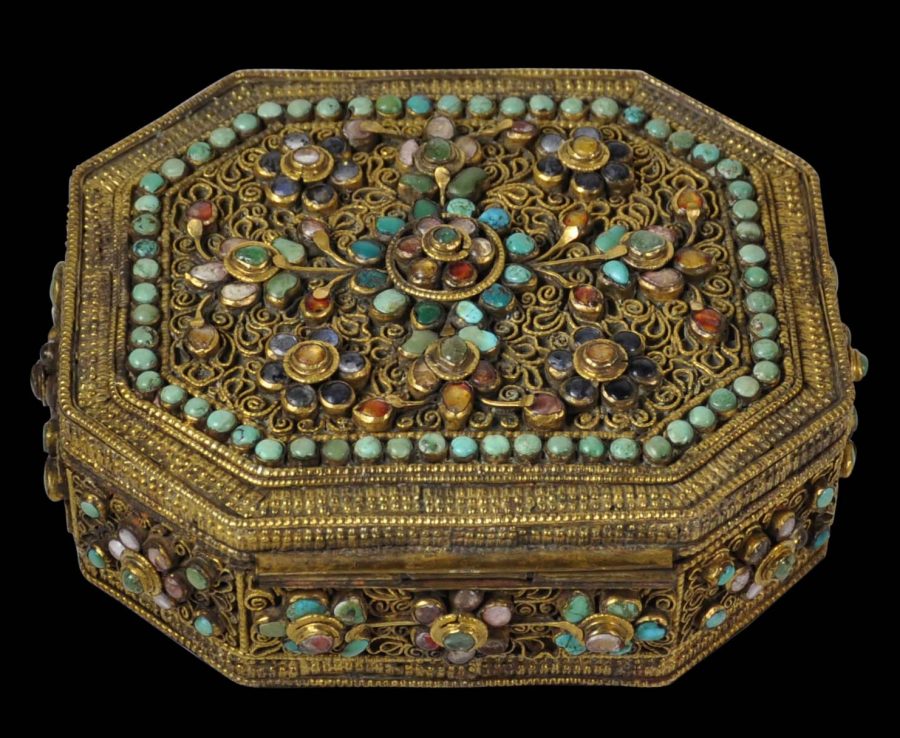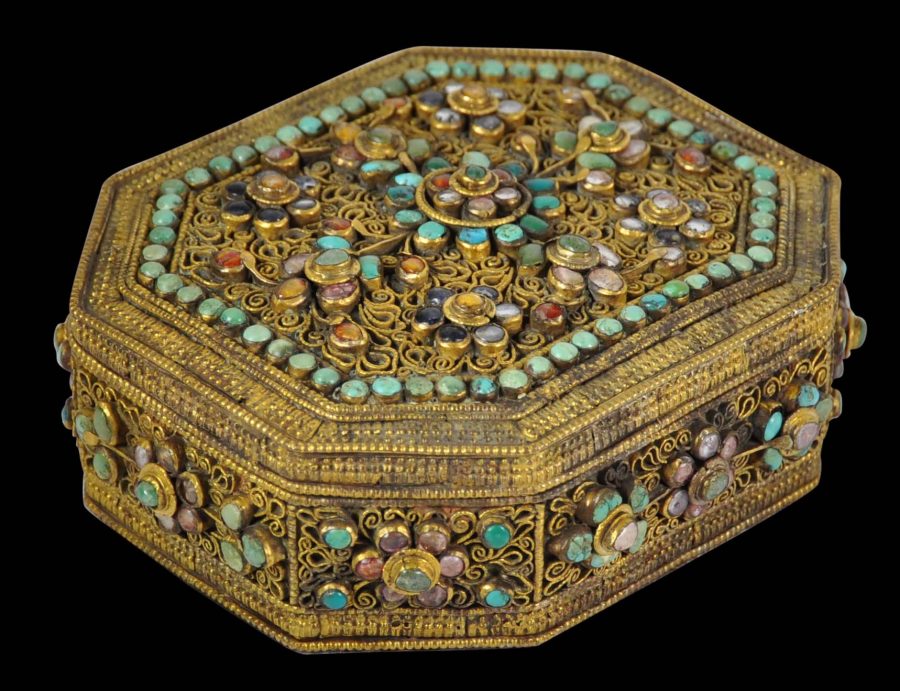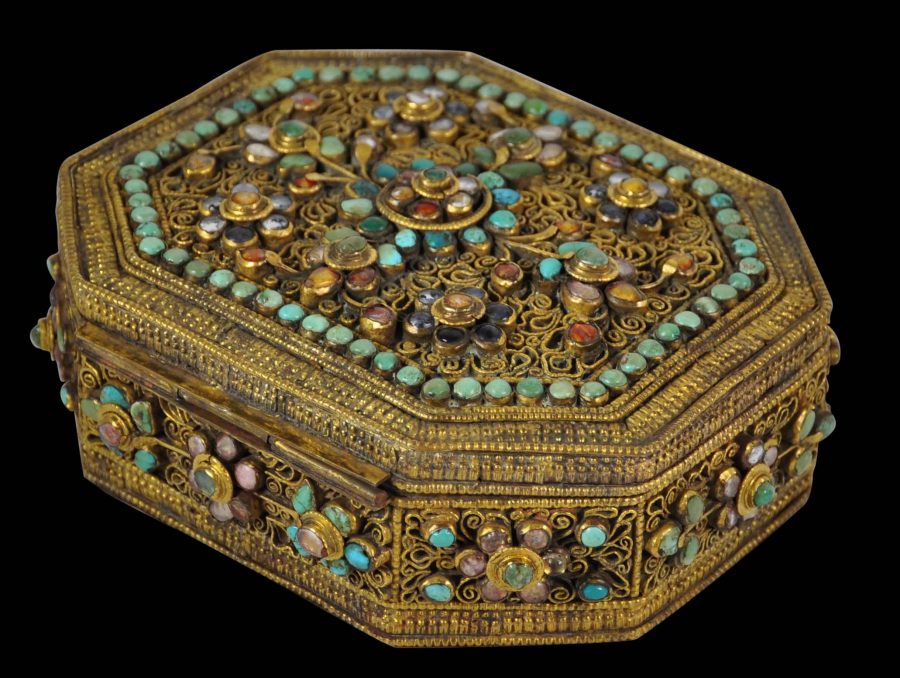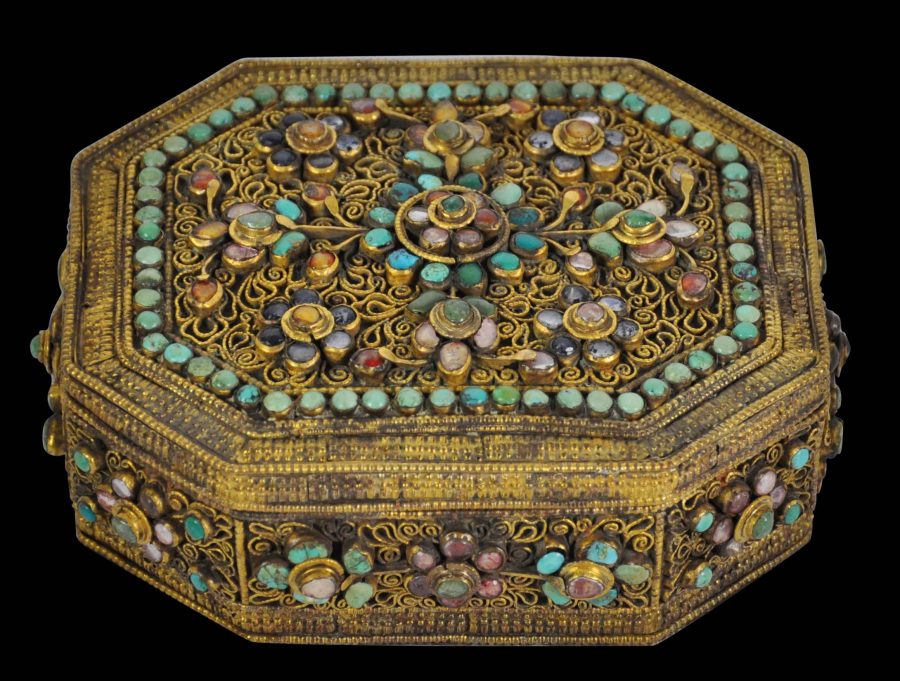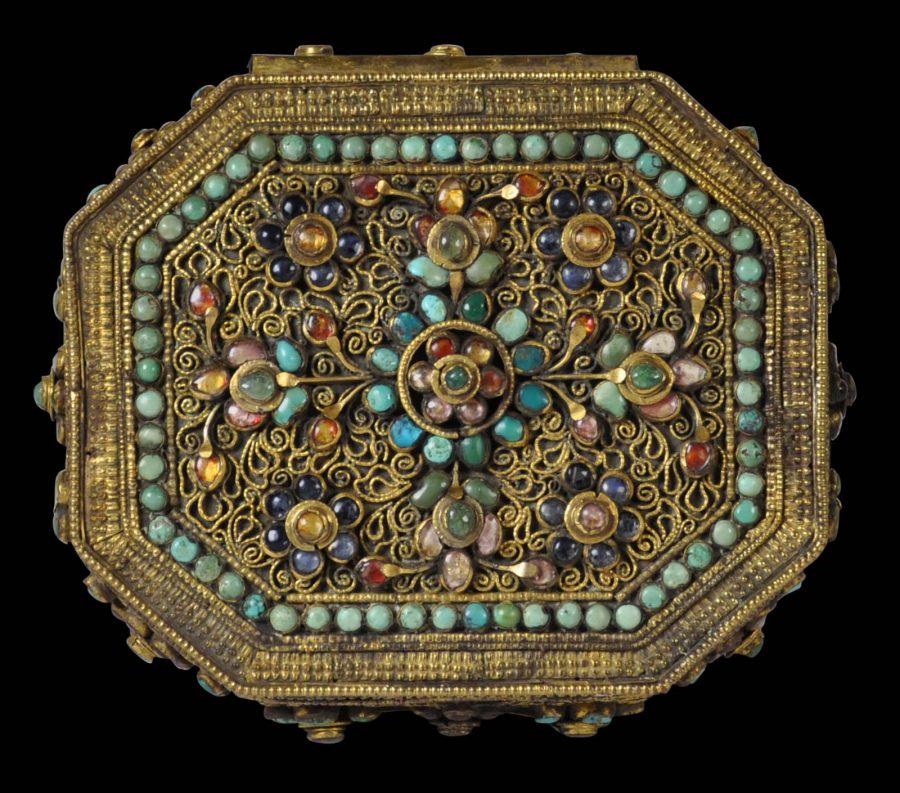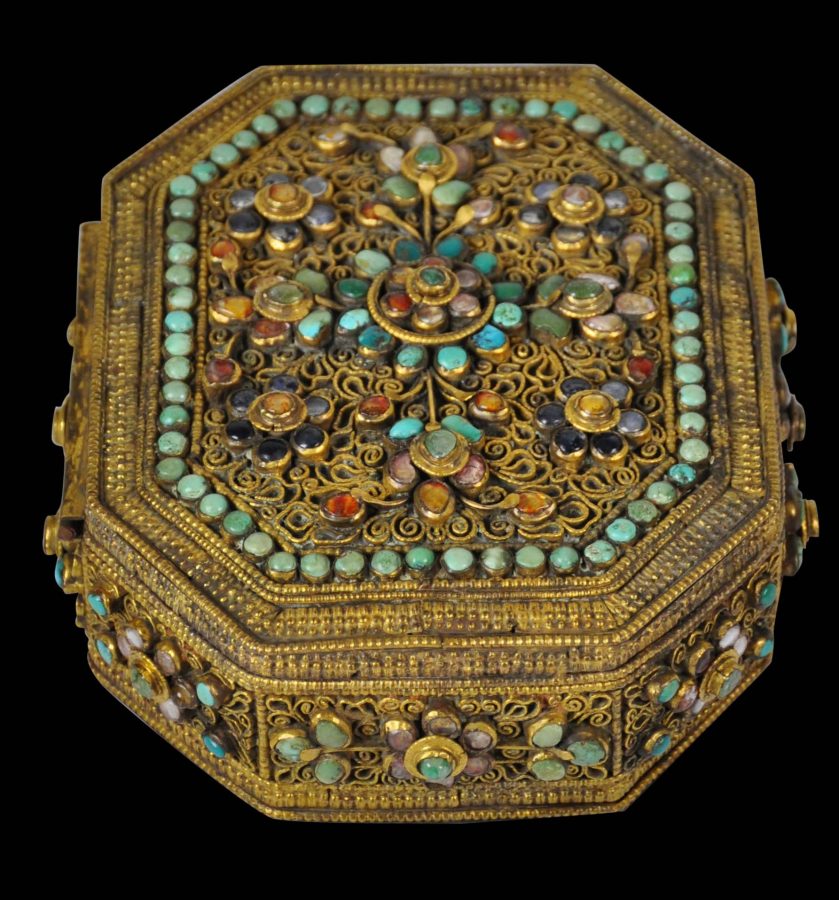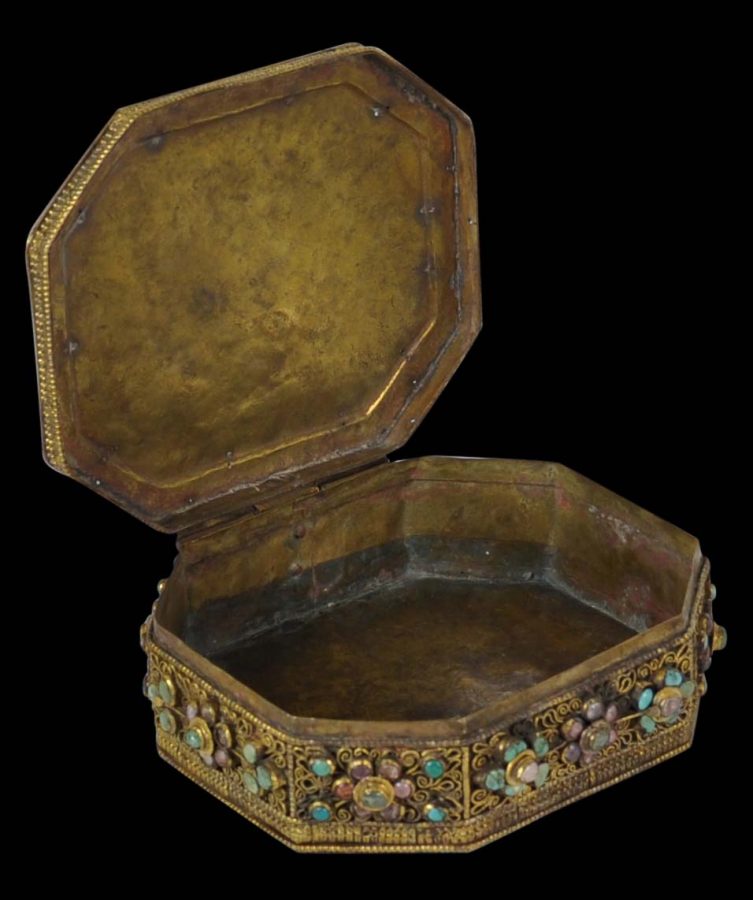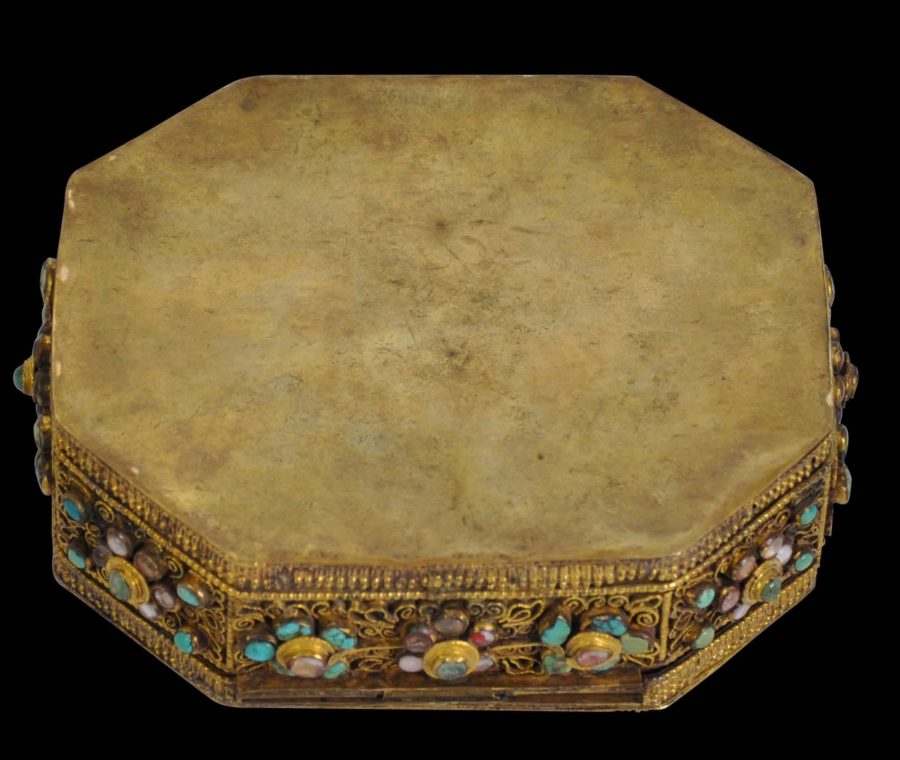This beautiful gilded (gold-plated) octagonal box has been constructed from beaten copper or possibly silver ally sheets. The sides and the hinged lid have been richly decorated in high relief with applied filigree work and applied chased panels, and set with dozens of cabochon rubies, turquoise, rock crystals, other stones, and probably some foil-backed glass cabochons. The stones are arrayed on each surface in florettes. The design on the lid is particularly complex, within a turquoise border.
All edges have been decorated with gilded, pearled wire.
The work is very much that of the Newar people of the Kathmandu Valley.
The wear, patina of the the gilding, lack of faceting to the stones, the simple box settings for the stones, and the relatively wide spacing of the applied filigree suggest an 18th century dating for this piece and possibly earlier. Similar items in the Jacques Marchais Museum of Tibetan Art are given a 17th-18th century dating and the Metropolitan Museum of Art uses a dating of 17th-19th dating for related items.
All the stones (except possibly one) are present. There are no losses to the filigree, and the lid fits tightly. The gilding has worn and yellowed to a pleasing tone. Overall, this is an excellent item.
References
Pal, P., Desire and Devotion: Art from India, Nepal, and Tibet in the John and Berthe Ford Collection, Philip Wilson Publishers, 2001.
Lipton, B., & N.D. Ragnubs, Treasures of Tibetan Art: Collections of the Jacques Marchais Museum of Tibetan Art, Oxford University Press, 1996.


